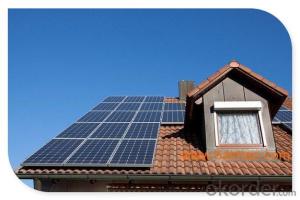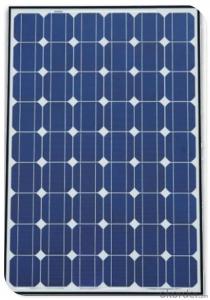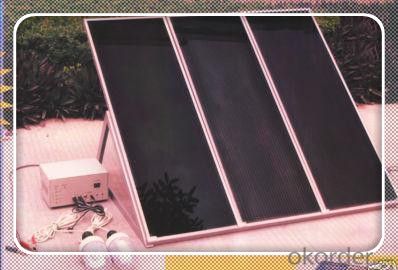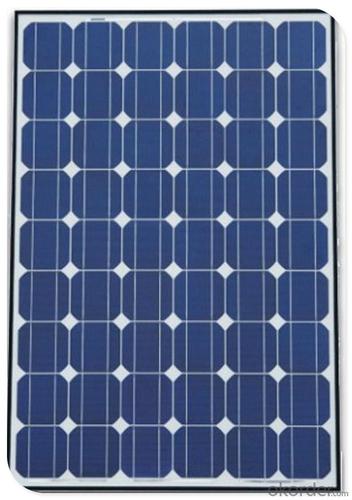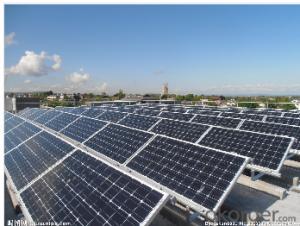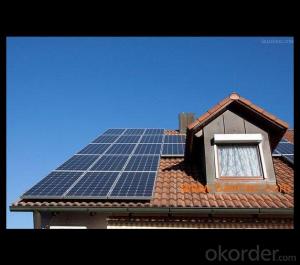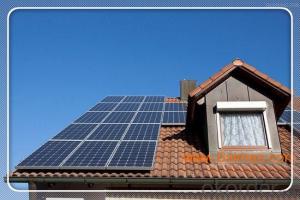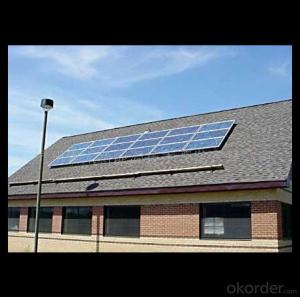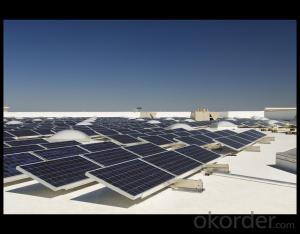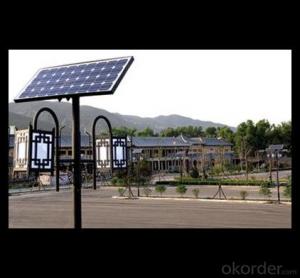Solar Panels Tx - 260w Direct Factory Sale Price 260-300watt Solar Panels
- Loading Port:
- China main port
- Payment Terms:
- TT OR LC
- Min Order Qty:
- 10000 watt
- Supply Capability:
- 100000 watt/month
OKorder Service Pledge
OKorder Financial Service
You Might Also Like
Specification
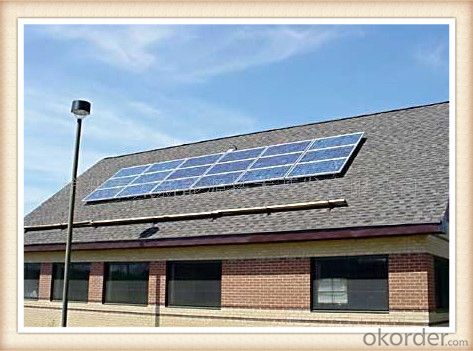
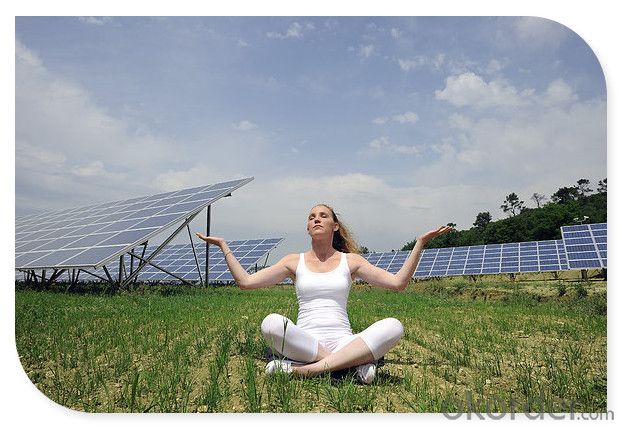
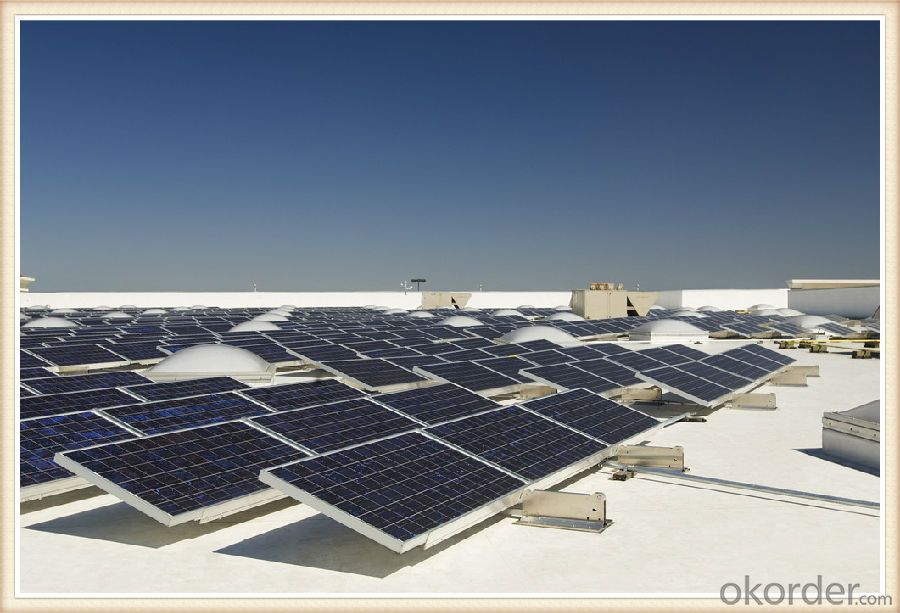
Solar Module Introduction
Solar modules use light energy (photons) from the sun to generate electricity through the photovoltaic effect. The majority of modules use wafer-based crystalline silicon cells or thin-film cells based on cadmium telluride or silicon. The structural (load carrying) member of a module can either be the top layer or the back layer. Cells must also be protected from mechanical damage and moisture. Most solar modules are rigid, but semi-flexible ones are available, based on thin-film cells. These early solar modules were first used in space in 1958.
Electrical connections are made in series to achieve a desired output voltage and/or in parallel to provide a desired current capability. The conducting wires that take the current off the modules may contain silver, copper or other non-magnetic conductive transition metals. The cells must be connected electrically to one another and to the rest of the system. Externally, popular terrestrial usage photovoltaic modules use MC3 (older) or MC4 connectors to facilitate easy weatherproof connections to the rest of the system.
Specification
Model Type | |
Peak Power-Pmax(W) | 5-200W |
Open Circuit Voltage-Voc(V) | 44.2 |
Maximum Power Voltage-Vmp(V) | 36 |
Short Circuit Current-Isc(A) | 5.4 |
Maximum Power Current-Imp(A) | 5 |
Maximum System Voltage | 1000V DC |
Maximum Series Fuse Rating | 10A |
Power Tolerance | -1~+3% |
Temperature Coefficients of Pmax | -0.45%/℃ |
Temperature Coefficients of Voc | -0.348%/℃ |
Temperature Coefficients of Isc | 0.031%/℃ |
Nominal Operating Cell Temperature | 44.5±2℃ |
Standard Testing Condition(STC) | Irradiance:1000W/m²;Temperature:25℃;AM=1.5 |
Qualification Test Parameters | |
Operating Temperature | -40℃~+85℃ |
Storage Temperature | -40℃~+85℃ |
Pressure Bearing | ≥5400Pascal/m² |
Wind Bearing | ≥5400Pascal/m² |
Mechanical Characteristics | |
Cell Size | Mono 125*125mm±0.5 |
No.of Cells | 72pcs(6*12) |
Dimension | 1580*808*40mm |
Weight | 15.5Kg |
Glass | 3.2mm High Transmission,Low Iron |
Frame | Anodized Aluminum Alloy |
Junction Box | IP65Rated |
Internal Diodes | 3 Bypass Diodes |
Cable | 1*4.0mm² Length 900mm |
Images
Packing & Shipping:
We have rich experience on how to pack the panels to make sure the safety on shipment when it arrives at the destination.
The normal size is packed by 25pcs/ carton / pallet. Paper carton for FCL shipping and wood carton for LCL shipping.
Features
1.High reliability with guaranteed -3% to +5% power output tolerance, ensuring return on investment
2.High conversion efficiency based on leading innovative photovoltaic technologies
3.Withstands high wind-pressure and snow load, and extreme temperature variations
4.Attractive appearanceUnique frame design, high mechanical strength, and easy Installation
Warranty:
For c-Si panel: 25years output warranty for no less than 80% of performance, 10 years output warranty for no less than 90% of performance. Free from material and workmanship defects within 5 years.
For a-Si panel: 20 years output warranty for no less than 80% of performance, 10 years output warranty for no less than 90% of performance. Free from material and workmanship defects within 2 years.
•100% product quality protection
•100% on-time shipment protection
•100% payment protection for your covered amount
FAQ:
(1)What price for each watt?
It depends on the quantity, delivery date and payment terms.
(2)What is your size for each module? Can you tell me the Parameter of your module?
We have different series of panels in different output, both c-Si and a-Si. Please take the specification sheet for your reference.
(3)Can you provide the peripheral products of the solar panels, such as the battery, controller, and inverter? If so, can you tell me how do they match each other?
Actually we are only manufacturer of solar panels, but we could try to source them for you in China if you need. We could provide you an optimal system design to instruct you how to install.
(4)Do you have the CE, TUV, UL Certification?
We’ve already passed all the tests, and any certificate is available.
(5)Have you ever sold your products to companies in my country?
Of course, we have customers in all general PV markets, but I think we should expand our market share along with the market growth.
(6)When did your company set up? You are a new company, how can I believe your quality?
We entered into Solar PV industry in 2005, now we have several plants in manufacturing of a-Si and c-Si panels, and our capacity is 220MW per year. Till now we have already passed all the tests by authorized laboratories, e.g. TUV, VDE, UL.
(7)Can you help us install the module if we cooperate with you?
We haven’t entered into installation sector, but we have the plan in near future.
(8) How do you pack your products?
We have rich experience on how to pack the panels to make sure the safety on shipment when it arrives at the destination.
(9) Can you do OEM for us?
Yes, we can.
(10)Can we visit your factory?
Surely, I will arrange the trip basing on your business schedule.
- Q: I heard the wind turbines, solar panels so far provide America with around 2% of our energy. So since liberals appear to want to replace natural energy with man made products, that cause massive pollution by the way to make- How long will that take 30 years, 00 years? How many Wind Turbines will Airplanes and birds and parachute jumpers smash into, isn't that a problem? How do we rid of natural energy before we have the LIBERAL BACK UP PLAN - WE DON'T REALLY HAVE ? How do they think this is gonna work? Its not logical, we need to come up with more ideas! That Battery idea kinda sucks since Batteries Need natural energy to work.
- Both the wind turbines ( windmills) and solar panels are less costly to implement than nuclear power and have less disaster potential. They have proven that Windmills miles out in the ocean are a great source of power. This dose not consume any land. For land bound areas they should use public roadways to line the windmills. For areas without sustainable winds they can use the combined effect of windmills and solar power. Honey, any motor needs oil. Whether it is a generator for a windmill or a nuclear reactor. Motors are what runs the world. Consider the amount of oil to run a nuclear facility. Tons more than a generator motor. Once a turbine is activated (motor started) the winds themselves turns the windmill. Each turbine is lined up with the next (wind farms) to push wind at the blades, they each push each other.
- Q: I don't know anything about where to buy solar panels. I just want to save on the electric bills.
- Solar panels could supply an air conditioning unit but it would be SUPER expensive to do. Air conditioners are power hogs.
- Q: Which is more efficient at producing energy? Reference(s) would be nice, but not required.
- Of course solar panels
- Q: What are the benefits of using solar panels?
- There are several benefits of using solar panels. Firstly, they provide a clean and renewable source of energy, reducing the dependence on fossil fuels and decreasing carbon emissions. Solar panels also help to lower electricity bills by generating free electricity from sunlight. Additionally, they require very little maintenance and have a long lifespan, making them a cost-effective investment. Furthermore, solar panels can increase the value of a property and provide energy independence, especially in remote areas or during power outages. Overall, using solar panels promotes sustainability, saves money, and contributes to a greener environment.
- Q: I'm part of the Sustainability group at school, the school principal is a d**k and doesn't care about the environment, he only cares about money.Me and the group will be talking in front of him and the school council (the people in-charge of the school's money) To convince them to put solar panels on the school roofs.I know that it definitely will help the school save on electricity bills, but it WILL cost a lot of money to put them in.In the end we just wanna reduce carbon emissions!HELP :)
- When okorder / Good luck but the best way to win is to find a way to get it done and then they can't say no.
- Q: Can solar panels be installed on parking lots or garages?
- Yes, solar panels can be installed on parking lots or garages. In fact, these areas are often ideal for solar panel installations due to the large open spaces and unobstructed sunlight exposure. Installing solar panels on parking lots or garages can help generate clean and renewable energy, reduce electricity costs, and provide shade for parked vehicles.
- Q: How do solar panels affect property value?
- Solar panels can have a positive impact on property value as they are considered a valuable addition to a home. Studies have shown that homes equipped with solar panels tend to sell for higher prices compared to similar homes without them. Additionally, solar panels can help homeowners save on energy costs, making the property more appealing to potential buyers.
- Q: I'm going to this camp and the instructors asked us to be prepared tomorrow to build a sun tracker for a solar panel. Does any one have any ideas, tips, or advice?
- Since the sun moves in the sky on a very predicatable course you don't need a closed loop control system to track it. All you need is a clock-drive motor and the proper gearing for your latitude. The clock drive motor will move at a constant rotational velocity based on time, and when it is geared down properly the angle of the shaft will follow the sun. Make sure the clock motor is powerful enough to move the solar panel, etc. That's a start, anyway. .
- Q: Can solar panels be installed on a high-rise building?
- Yes, solar panels can be installed on a high-rise building. In fact, high-rise buildings are ideal candidates for solar panel installations due to their large surface areas and access to sunlight. However, certain factors such as structural considerations, building ownership, and local regulations need to be taken into account before installation.
- Q: I can't figure out how to charge a Ni Cd (BD 8V Firestorm) battery directly with a solar panel so I've come up with an alternative which might or might not work. I thought I would connect an inverter (I found a nice 400W for $30) to my trucks battery and plug the BD Firestorm battery charger into the inverter. Then I was thinking I could use a 5W solar panel to trickle charge the truck battery and keep it connected after the Ni Cd is charged to ensure the truck battery is topped off. The truck would not be running during this process. Will this solution work? Is there a better solution?
- Your 5W solar panel has to put out about 5 volts or higher to charge a 2 volt battery. 5 watts at 5 volts is only 0.3 amps, which is only enough to handle the internal leakage inside a large battery, plus a bit. If you have a 00 amp-hour battery, that panel would take 300 hours of bright sunlight to charge it. But I do agree that it will keep the truck battery charged as long as it gets sun. Make sure you put a diode in series between the panel and the battery to prevent the battery from discharging through the panel when the sun goes behind a cloud. I'd be worried that if you charged the 8 volt battery frequently, the panel would not be able to replace the lost charge, and your 2 volt battery would wind up discharged. That 8 volt battery is .2 amp-hrs (if I got the correct one). That is 27 watt-hours. Allowing for losses, you car battery will have to deliver over 30 watt hours to charge it. Your solar panel will take over 6 hours of bright sun to make up that difference. That is over 24 hours this time of year. So if you recharged it more than once every 2 days, you will lose charge in the truck battery. .
Send your message to us
Solar Panels Tx - 260w Direct Factory Sale Price 260-300watt Solar Panels
- Loading Port:
- China main port
- Payment Terms:
- TT OR LC
- Min Order Qty:
- 10000 watt
- Supply Capability:
- 100000 watt/month
OKorder Service Pledge
OKorder Financial Service
Similar products
Hot products
Hot Searches

